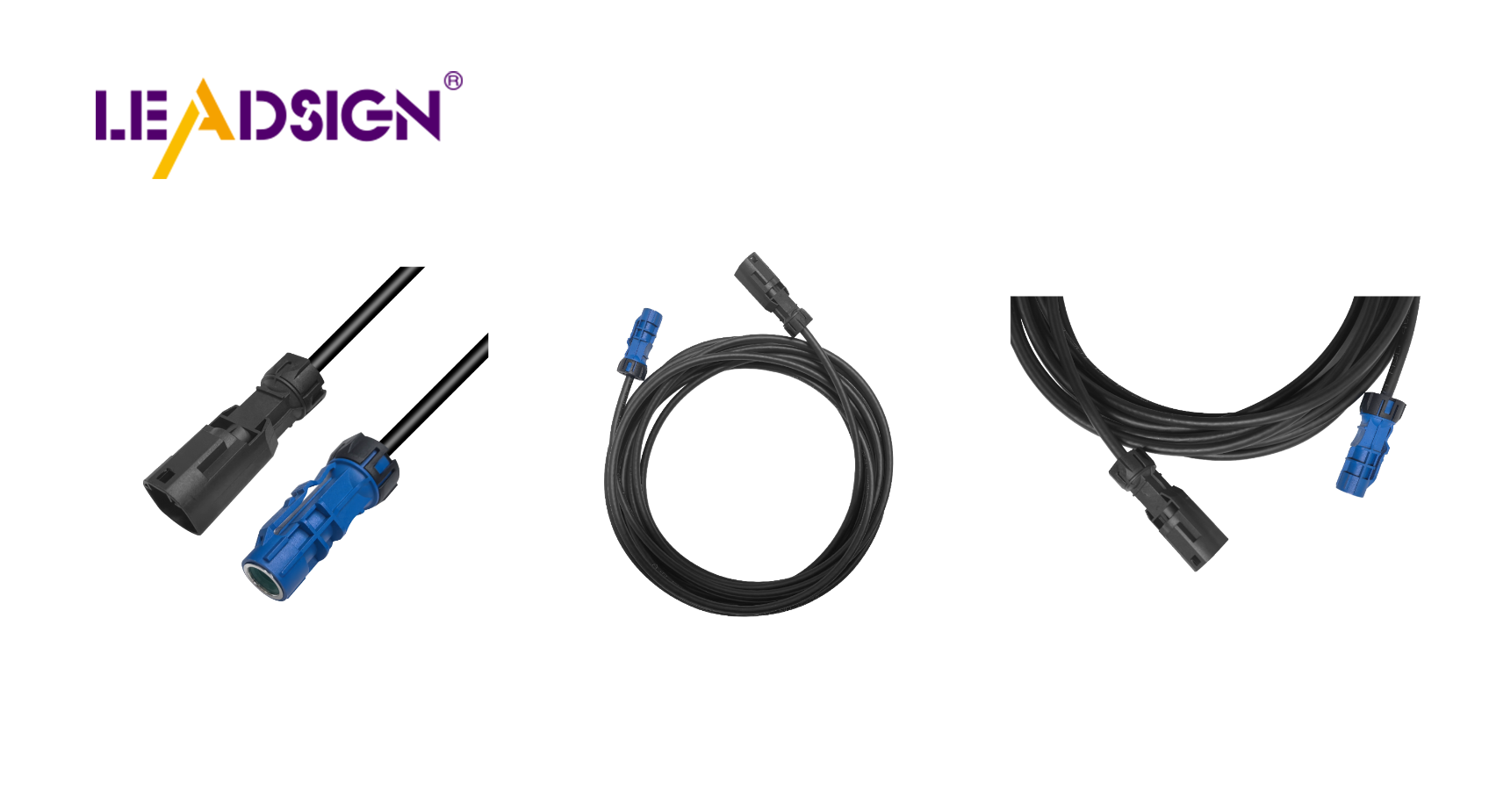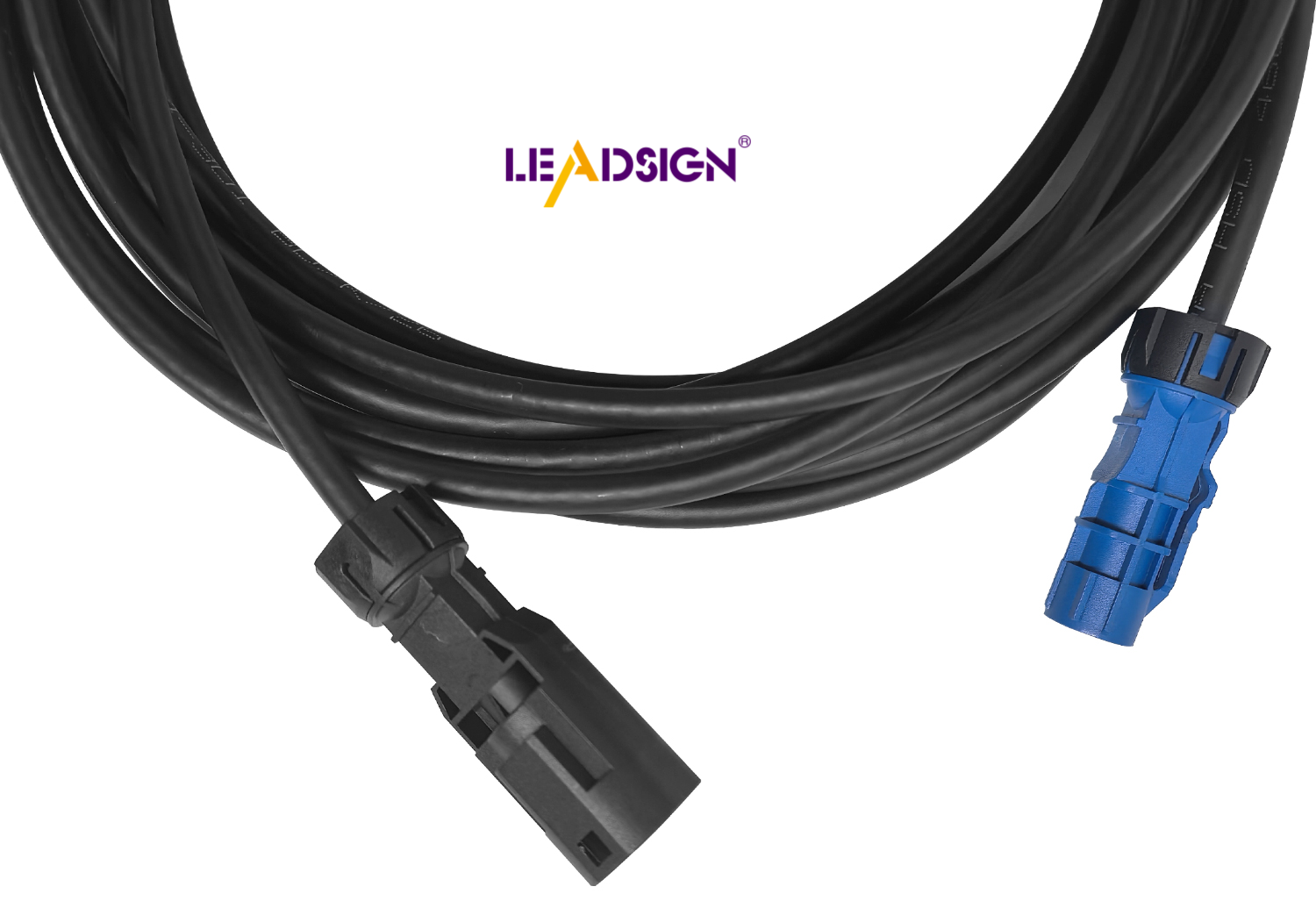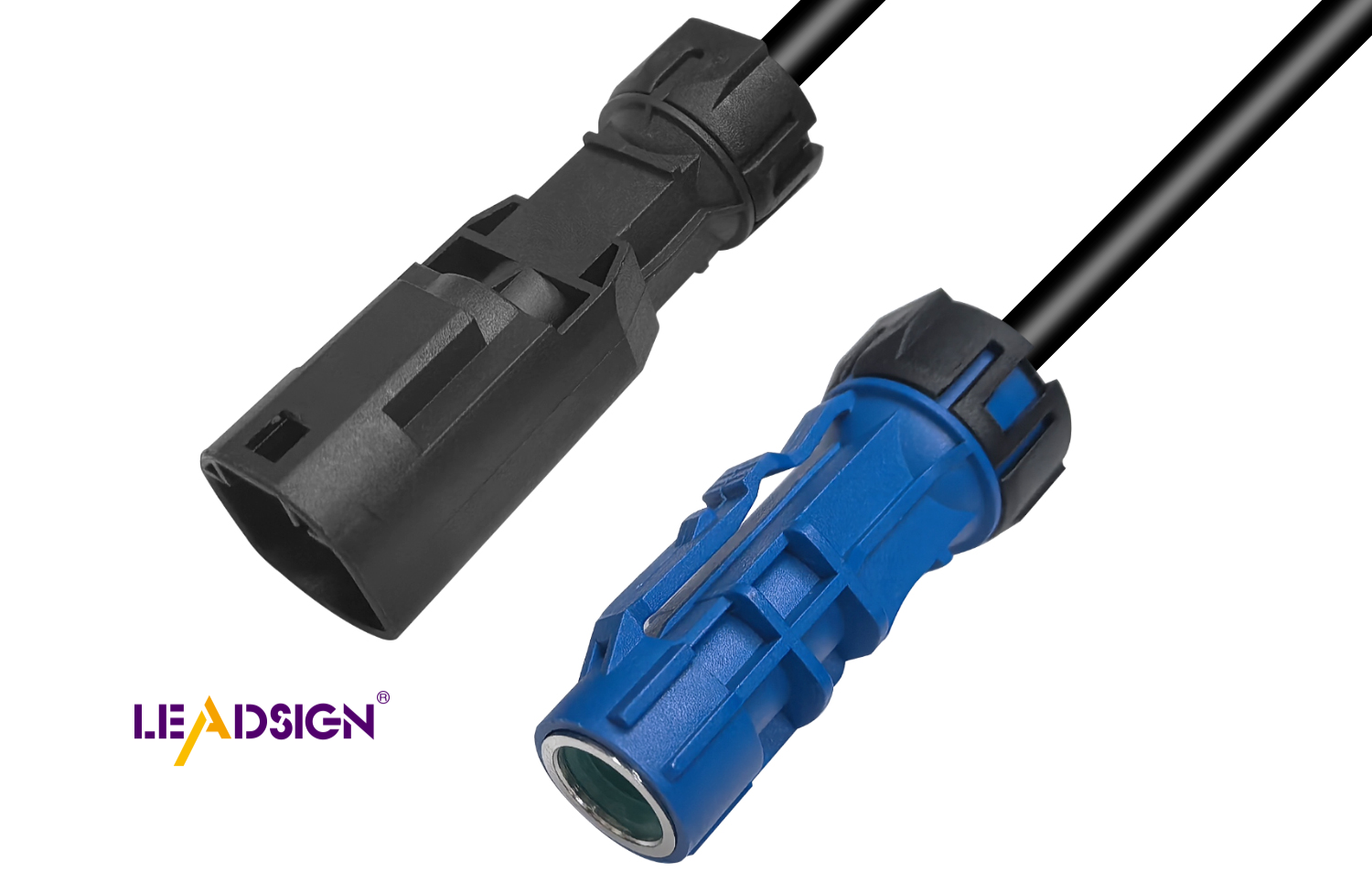Sustainable Materials Transforming Automotive Harness Connectors

Sustainability is now very important in the car industry. Each year, about 80 million cars are made, using over 112 million tons of materials. This causes over 10% of the world's carbon dioxide pollution. Using eco-friendly materials can help lower this problem. Recycled plastics cut down on trash in landfills. Natural fibers like kenaf make light, biodegradable parts. These new ideas are changing auto harness connectors. They are becoming greener and better while still working well.
Key Takeaways
Eco-friendly materials, like reused plastics and plant fibers, lower pollution in making cars.
Lightweight metals, like aluminum, make cars lighter, save fuel, and reduce expenses.
Brands like BMW and Volvo use green materials, proving cars can be made in a cleaner way.
The Need for Sustainable Materials in Auto Harness Connectors

Environmental and regulatory pressures
Cars are a big cause of air pollution. Making cars uses fossil fuels, which release harmful gases. This shows why we need eco-friendly methods. Governments and groups are asking for greener ways to make cars.
Rules and new ideas are needed to replace old materials and fight climate change.
New rules are pushing this change. These include using recycled materials, paying carbon taxes, and following stricter green rules. Using eco-friendly materials can help cars pollute less and meet these rules. For example, recycled plastics or plant-based materials in car connectors can cut pollution and follow these laws.
Challenges with traditional materials
Old materials in car wiring have many problems. Rust is a big issue. When metal gets wet, it rusts and weakens. This can make sensors in cars stop working right.
Another problem is the design. Some wiring joints break easily, making the system unreliable. New designs use special boxes to connect wires better. Weight is also a problem. Car wiring can weigh 30-50 kilograms because of heavy metals. This extra weight makes cars use more fuel and perform worse.
Making old materials is also hard. It needs many steps and can’t be fully automated. Eco-friendly materials solve these problems. They make lighter, better, and greener car connectors.
New Trends in Sustainable Car Materials
Recycled and plant-based plastics
Recycled and plant-based plastics are changing car wiring systems. These materials cut waste and help the environment. Recycled plastics, like PCR and PIR, use less new material. PIR plastics also reduce waste during production, making them eco-friendly. Plant-based plastics, like Nylon 11 and PLA, are strong and biodegradable. They meet green standards and have a smaller carbon footprint than regular plastics.
Material | Type | Features | Uses |
|---|---|---|---|
Bioplastic | Fully recyclable, lowers CO2 emissions, great for packaging | Not listed | |
Polyhydroxyalkanoates (PHAs) | Bioplastic | Breaks down naturally, made by microorganisms, used in many ways | Packaging, implants, tissues |
Polyamide 11 (Nylon 11) | Bioplastic | Strong, resists chemicals and UV rays | Fuel lines, tanks, insulation |
Polylactide (PLA) | Bioplastic | Breaks down in compost, strong | Floor mats, panels, covers |
rEPP | Recycled plastic | Used for safety and comfort parts in cars | Seats, bumpers |
NEOPS | Recycled plastic | Eco-friendly replacement for regular polystyrene | Not listed |
These plastics make car connectors greener by cutting waste and reusing materials.
Lightweight metals and conductive materials
Lightweight metals are improving car wiring systems. Aluminum is one-third the weight of copper. This makes wiring lighter and cars use less fuel. Aluminum has 64% of copper’s conductivity, so it still works well. Using aluminum wires can save up to 40% in costs. Copper-clad aluminum wires are smaller and cheaper, saving 10% in low-voltage connectors.
Using lightweight metals lowers car weight and saves energy without losing quality.
Composites and tiny materials
Composites and tiny materials are changing car connectors. They are lighter, stronger, and handle heat better. Composite parts are 20% stronger and 30% more heat-resistant than old materials. They also cut noise by 70%, making cars quieter and more efficient. Biodegradable composites break down naturally, helping the planet.
Benefit | Details |
|---|---|
Weight Reduction | Makes cars use less fuel and be more eco-friendly. |
Noise Reduction | Cuts noise by 70%, improving comfort and efficiency. |
Strength and Heat Resistance | 20% stronger and 30% better at handling heat, lasting longer. |
Using these materials supports green and smart car wiring systems.
Impact of Sustainable Materials on Auto Harness Connectors
Smaller and space-saving designs
New materials help make smaller car wiring connectors. These connectors save space but still work well. Bio-based polyamide is used for tiny connectors. It can have walls as thin as 0.1mm. It works for connectors with many pins and small spaces under 0.3mm. Nickel alloys with tiny crystals make thinner coatings. These coatings work well and are better for the environment. Silver with tiny structures is strong and reduces resistance. It is great for small electric car connectors.
Material | Key Features |
|---|---|
Bio-based high-temperature polyamide | Used for tiny connectors with thin walls and small spaces. |
Nanocrystalline nickel alloys | Makes thin coatings that work well and are eco-friendly. |
Nanostructured silver | Strong, low resistance, and perfect for small electric car parts. |
These smaller designs save space and improve car wiring systems.
Better heat control
Managing heat is very important in car wiring. This is especially true for high-voltage systems. Bio-based polyamide and tiny-structured silver help control heat. Polyamide with glass fibers handles high heat and lead-free soldering. Silver with tiny structures is twice as strong as regular silver. It stays durable and keeps low resistance even in tough conditions.
Material Type | Key Features | Thermal Management Benefits |
|---|---|---|
Bio-based Polyamide | Made from plants, reinforced with glass fibers, handles high heat. | Works with lead-free soldering, spreads heat well. |
Nanostructured Silver | Stronger than regular silver, made for tough conditions. | Low resistance, durable, handles high heat, lasts long. |
Balancing heat control with eco-friendly goals is hard. Materials must save energy and follow green rules. They also need to fit into recycling systems.
High-voltage systems for electric cars
Electric cars need high-voltage systems to work well. New materials make these systems better and greener. Tiny-structured silver handles high voltage with low resistance. It is strong and reliable for electric car connectors. Lightweight metals and mixed materials also help. They make wiring lighter and improve how electricity flows.
These new materials are used in electric car connectors. They handle high voltage and are eco-friendly. These changes make cars better and support green goals.
Case Studies of Industry Adoption

Companies leading the way in sustainable materials
Many companies are working hard to use greener materials. They are setting examples for others to follow:
Konnra focuses on cutting waste and saving energy in production. It ensures products are eco-friendly and meet market needs.
BMW AG uses natural fibers to make lighter seatbacks. It also uses Verdana, a plant-based material, for car interiors. Old fishing nets are recycled into car parts too.
Volvo includes recycled materials in its cars. Some models now have at least 35% recycled content.
Ford works with partners to ensure fair and green practices. It cares about the environment and human rights in its supply chain.
General Motors tries bio-based plastics and recycled fabrics. These materials help cars use less fuel and harm the planet less.
Successful projects in automotive harness connectors
Eco-friendly materials are already improving car wiring systems. BMW uses old fishing nets to make car parts. These parts reduce waste and can be recycled again.
Volvo uses recycled plastics to make lighter wiring connectors. This helps cars perform better and stay eco-friendly.
Ford teams up with others to create greener wiring designs. These projects show how teamwork can lead to better, sustainable car technologies.
These efforts prove companies are changing the car industry for a cleaner future.
Future Trends and Challenges in Sustainable Materials
Circular economy practices
In the future, circular economy ideas will be very important. These ideas aim to cut waste and reuse materials for a greener process. For example:
Companies are using eco-friendly plastics that break down naturally.
Machines that save energy and use renewable power are reducing pollution.
Recycling programs are helping keep trash out of landfills.
Businesses are working with suppliers who care about the environment.
Making parts easy to take apart and recycle is also key. By reusing leftover materials and fixing broken parts, companies need fewer new resources. This helps the planet and saves materials. Fixed parts can use 80% less new material and make 50% less CO2 than new ones.
Scaling sustainable material adoption
Using more green materials in car wiring has challenges. The car-making process is complicated, with many suppliers causing different impacts. It’s hard to track these impacts without clear rules. Also, getting rid of old cars responsibly is still a big problem. Recycling and safe disposal of parts are needed for better practices.
To solve these problems, teamwork is necessary. Using lighter, recyclable materials and creating recycling systems can help. Better packaging designs and shared planning can also make it easier to use green materials widely.
Addressing cost and supply chain challenges
High costs and supply issues slow down green material use in wiring. Dependence on oil-based materials causes price changes and high pollution. There aren’t enough recycled or plant-based materials to meet demand. Rules like carbon taxes and recycled content laws add more pressure.
To fix this, companies are trying new ideas like green packaging and recycling systems. By working with suppliers and planning better, they can lower costs and get enough materials. These steps not only help the environment but also improve how electric cars work.
Eco-friendly materials are changing car harness connectors. They are now lighter, tougher, and better for the planet. You can help by supporting new ideas and teamwork. Using plant-based plastics and advanced materials saves energy. Smart factories with AI can also improve efficiency. Sharing rides and cars means fewer vehicles on roads. This lowers harm to the environment. These actions can lead to cleaner and smarter car technology in the future.
FAQ
What drives the automotive wiring harness market?
The rise of electric cars and safety systems increases demand. These needs push for greener materials in wiring harnesses. They help the market grow.
How does centralized vehicle design affect wiring harnesses?
Centralized designs make wiring simpler and lighter. This improves charging and supports eco-friendly wiring ideas.
What are the main parts of the wiring harness market?
The market has three main parts: powertrain, chassis, and body wiring. Each part works to be greener and perform better with new trends.
See Also
Benefits of HFM Connectors for Automotive Applications
Enhancing Automotive Performance Using HFM Connectors
Transforming Automotive Connectivity Through HFM Connector Benefits
Exploring High-Speed FAKRA-Mini Connectors for Automotive Innovation
Improving Data Transmission in Automotive with Advanced Connectors

